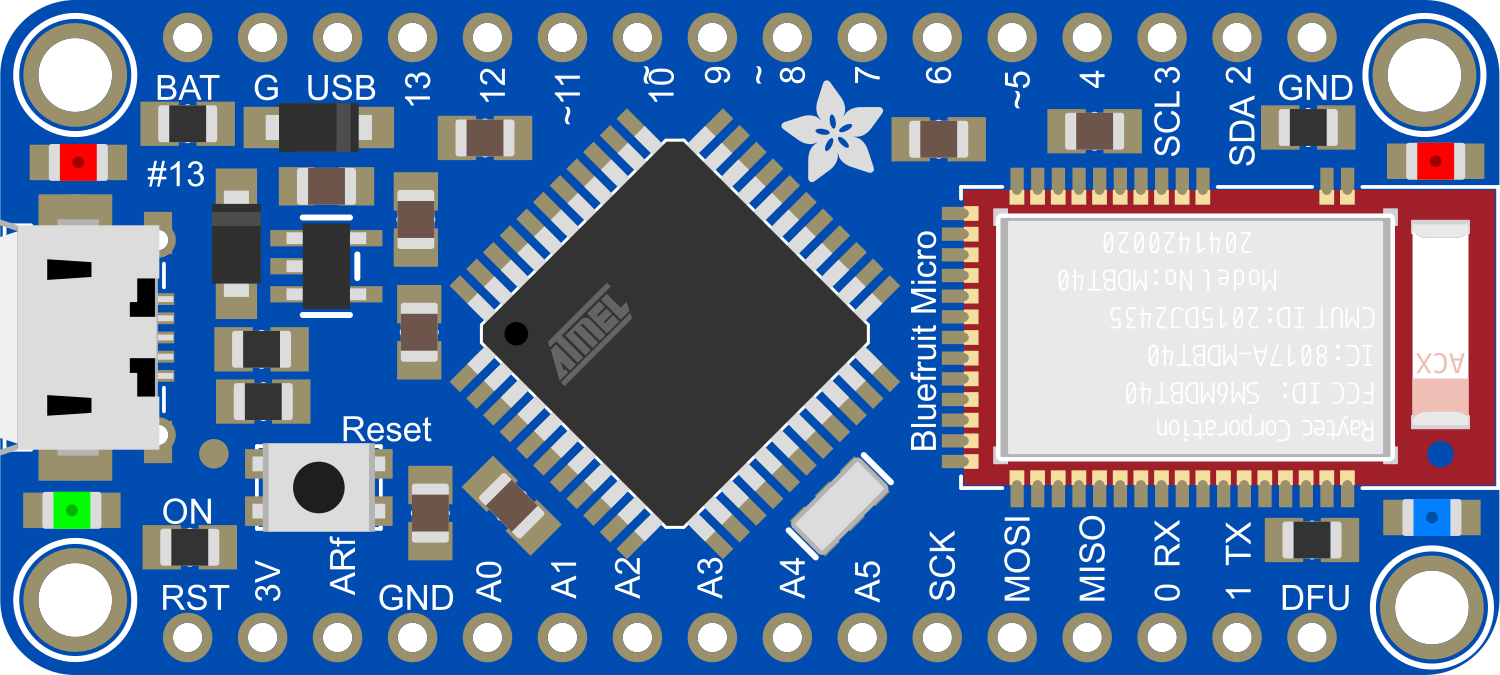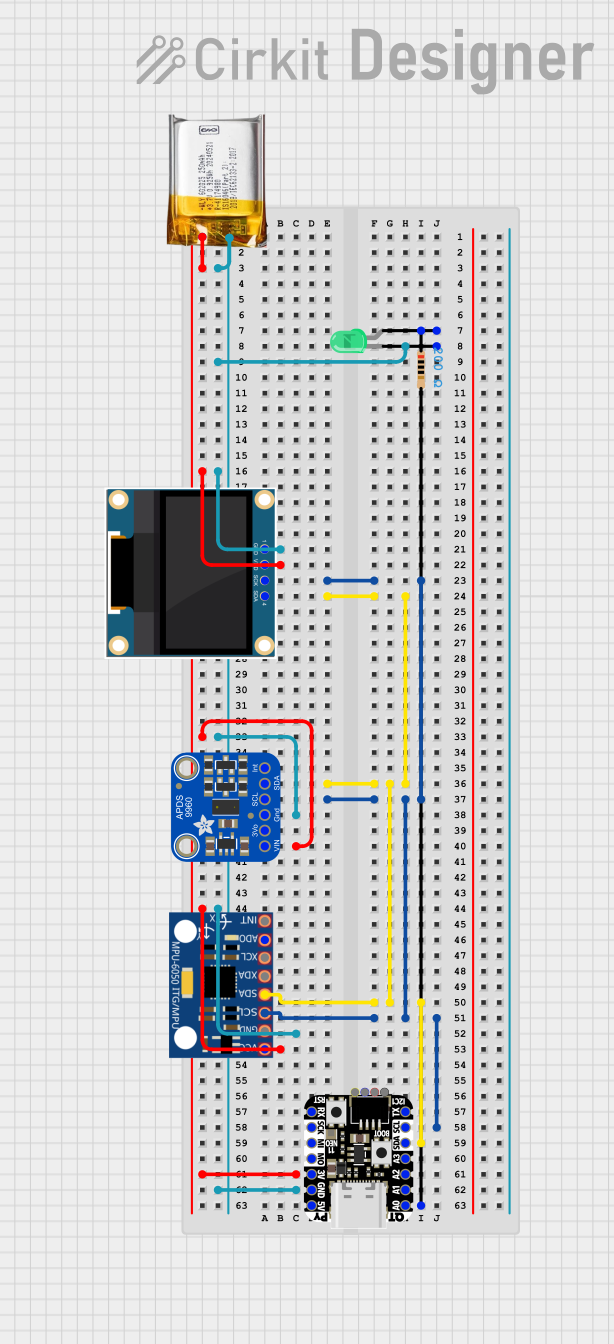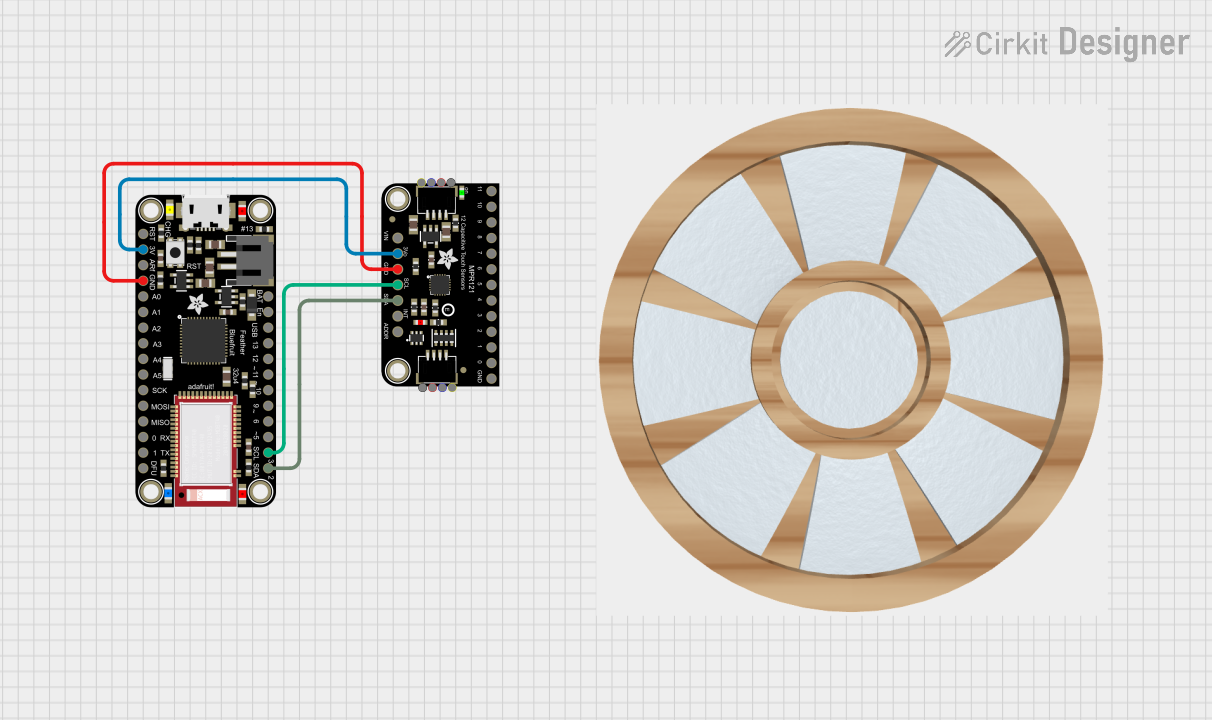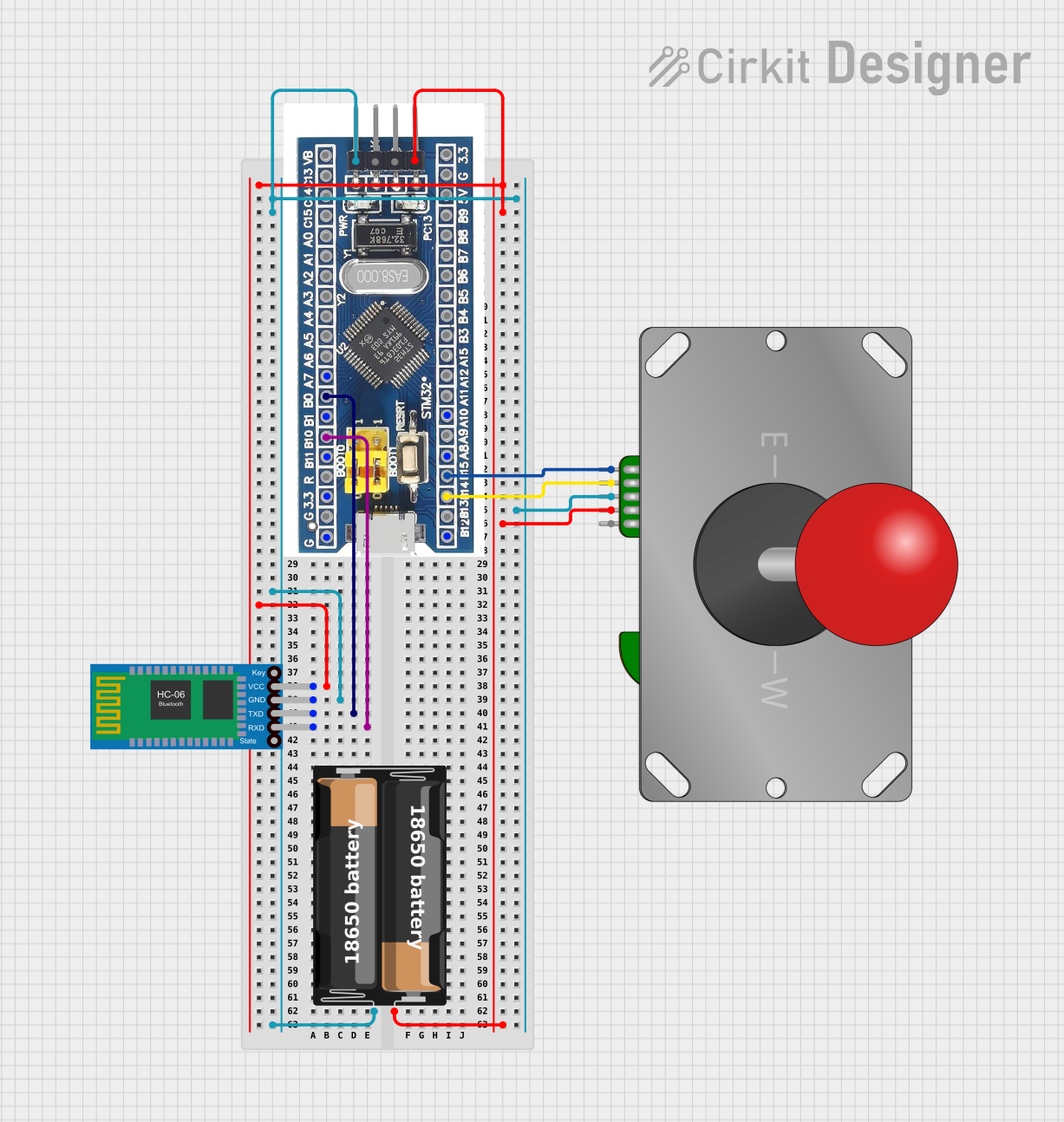
How to Use Adafruit Bluefruit LE Micro: Examples, Pinouts, and Specs

 Design with Adafruit Bluefruit LE Micro in Cirkit Designer
Design with Adafruit Bluefruit LE Micro in Cirkit DesignerIntroduction
The Adafruit Bluefruit LE Micro is a versatile Bluetooth Low Energy (BLE) breakout board that combines a BLE module with an ATmega32u4 microcontroller. This compact component is designed to add wireless communication capabilities to a wide range of projects, allowing them to interact with smartphones, tablets, and other BLE-compatible devices. It is particularly useful for wearable electronics, wireless sensor networks, and IoT applications.
Explore Projects Built with Adafruit Bluefruit LE Micro

 Open Project in Cirkit Designer
Open Project in Cirkit Designer
 Open Project in Cirkit Designer
Open Project in Cirkit Designer
 Open Project in Cirkit Designer
Open Project in Cirkit Designer
 Open Project in Cirkit Designer
Open Project in Cirkit DesignerExplore Projects Built with Adafruit Bluefruit LE Micro

 Open Project in Cirkit Designer
Open Project in Cirkit Designer
 Open Project in Cirkit Designer
Open Project in Cirkit Designer
 Open Project in Cirkit Designer
Open Project in Cirkit Designer
 Open Project in Cirkit Designer
Open Project in Cirkit DesignerTechnical Specifications
Key Technical Details
- Microcontroller: ATmega32u4
- Bluetooth Module: Nordic nRF51822 (ARM Cortex-M0)
- Operating Voltage: 3.3V
- Input Voltage (recommended): 4-12V DC
- Input Voltage (limits): 3.3-16V DC
- I/O Pins: 20 (including 7 PWM outputs and 12 analog inputs)
- Flash Memory: 32 KB (ATmega32u4) of which 4 KB used by bootloader
- SRAM: 2.5 KB (ATmega32u4)
- EEPROM: 1 KB (ATmega32u4)
- Clock Speed: 16 MHz
- Supported Bluetooth Profiles: GAP, GATT, HID, etc.
- Frequency: 2.4 GHz ISM band
- Antenna: PCB Antenna / u.FL connector for external antenna
Pin Configuration and Descriptions
| Pin Number | Name | Description |
|---|---|---|
| 1 | VIN | Input voltage to the board (4-12V DC) |
| 2-7 | D2-D7 | Digital pins, can be used as input/output |
| 8 | GND | Ground pin |
| 9 | AREF | Analog reference pin for ADC |
| 10-15 | D8-D13 | Digital pins, can be used as input/output |
| 16 | A0-A5 | Analog input pins |
| 17 | RST | Reset pin (active low) |
| 18 | 3V3 | 3.3V output from the onboard regulator |
| 19 | GND | Ground pin |
| 20 | RAW | Raw input voltage (unregulated) |
Usage Instructions
Integrating with a Circuit
To use the Adafruit Bluefruit LE Micro in a circuit:
- Connect the
VINpin to a 4-12V DC power source. - Connect the
GNDpin to the ground of your power supply. - Utilize the digital and analog pins (
D2-D13andA0-A5) as needed for your project. - If necessary, connect the
RSTpin to a pushbutton for manual resetting. - For BLE communication, pair the device with a BLE-compatible smartphone, tablet, or computer.
Best Practices
- Ensure that the input voltage does not exceed the recommended limits to prevent damage.
- Use the onboard 3.3V regulator output (
3V3pin) to power external 3.3V components. - When programming, select "Adafruit Bluefruit Micro" from the Arduino IDE's board menu.
- To reduce power consumption, utilize the BLE module's sleep modes when not actively communicating.
Example Code for Arduino UNO
#include <SPI.h>
#include <Adafruit_BLE_UART.h>
// Create the bluefruit object, using SPI interface
Adafruit_BLE_UART ble(SPI_CS, SPI_IRQ, SPI_RST);
void setup(void) {
Serial.begin(9600);
ble.begin();
}
void loop() {
// Tell the nRF8001 to do whatever it should be working on.
ble.poll();
// Check for incoming data from the BLE module
if ( ble.available() ) {
while (ble.available()) {
char c = ble.read();
Serial.print(c);
}
// Add your code here to handle the incoming data
}
}
Note: The above code is a basic setup for initializing the BLE module and reading incoming data. You will need to install the Adafruit BLE library for Arduino to use this code.
Troubleshooting and FAQs
Common Issues
- Device not powering on: Check the input voltage and connections to
VINandGND. - No BLE communication: Ensure the device is correctly paired and within range.
- Sketch not uploading: Verify the correct board is selected in the Arduino IDE and the bootloader is functioning.
Solutions and Tips
- If the device is not recognized by your computer, try pressing the
RSTbutton twice quickly to enter bootloader mode. - For range issues, consider using an external antenna if the onboard antenna does not suffice.
- Always disconnect the board from power before making or altering connections to prevent damage.
FAQs
Q: Can I use the Adafruit Bluefruit LE Micro with a 5V system? A: Yes, but ensure that the logic levels are compatible. The board operates at 3.3V.
Q: How do I update the firmware on the BLE module? A: Firmware updates can be done via the DFU protocol. Adafruit provides detailed guides on their website.
Q: What is the maximum range of the BLE communication? A: The range can vary depending on environmental factors but typically is around 10 meters (33 feet) with the onboard antenna.
For further assistance, consult the Adafruit forums or the extensive guides available on the Adafruit Learning System.